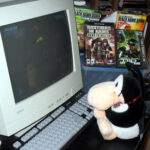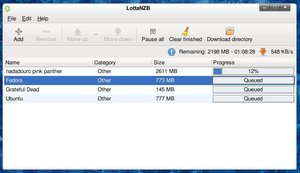You normally play Canasta with two standard 52 packs of cards with four jokers, which makes 108 cards that you will be playing with. They all have point values such as: Jokers, 50 points each, A, 2, 20 points each, K, Q, J, 10, 9, 8, 10 points each, and the 7,6,5,4, 5 points each. The cards A, K, Q, J, 10, 9, 8, 7, 6, 5, 4, are called natural cards. All the deuces (2) and the jokers are all wild cards. With restrictions, wild cards can be used during the game as substitutes for a natural card of any rank. The threes have special functions and values, depending on which variation of Canasta is being played.
The deal and the canasta play.
Each player is dealt a hand of cards, and in the center of the table is a face-down pile of cards which is called the stock and the face-up pile is referred to as the discard pile. The player to the left of the dealer plays first, and then the play passes clockwise. The basic turn consists of drawing the top cards of the stock, adding it to your hand without showing it to the other players, and then discarding one card from your hand face up in the discard pile. Now you are ready to play canasta.
Canasta Rules.
After you have drawn your card, but before you have discarded, you may sometimes be able to play some cards from your hand to the table face- up. To play your cards, is called melding, and the sets of cards are called melds. These melded cards remain face-up on the table to the game ends.
The play canasta game has ended once a player goes out, which means disposes of all his or her cards. You are only allowed to go out after your team has fulfilled certain statues, which may vary according to the type of canasta you are playing but always included completing at least on seven-card meld or canasta. When you have gained this, you can go out by melding your whole hand, leaving nothing to discard. The play canasta game can also end in the stock pile runs out of cards. You add up your scores and see who wins that way.
The object of the game is to score points by melding cards. A valid meld consists of three or more cards of the same natural rank (any rank from four up to ace), such as three kings, six fives, etc. When playing with partners, melds belong to a partnership, not to an individual player. They are kept face up in front of one of the partners. Typically, a partnership will have several melds, each of a different rank. You can add further cards of the appropriate rank to any of your side’s melds, whether begun by yourself or by your partner, but you can never add cards to an opponent’s meld. Wild cards (jokers and deuces) can normally be used in melds as a substitute for an appropriate rank.
Some Canasta tips.
A meld of seven cards is called canasta. If all of the cards in it are natural, it is called a natural or pure or clean or red canasta; the cards are squared up and a red card is placed on top. If it includes one or more wild cards it is called a mixed or dirty or black canasta; it is squared up with a natural black card on top, or one of the wild cards in it is placed at right-angles, to show that it is mixed.
Frozen discard pile
There are three ways that the discard pile may be frozen.
The discards pile is frozen against all players if it contains a wild card. To show that the discard pile is frozen, the wild card if placed at right angles in the pile, so that it is still visible after other cards are discarded on top of it.
In the very rare case where a red three is turned up to start the discard pile after the deal, the discard pile is frozen against all players and the red three is placed at a right angle to also show this.
If your partnership has not yet melded, the discard pile is also frozen against you.




